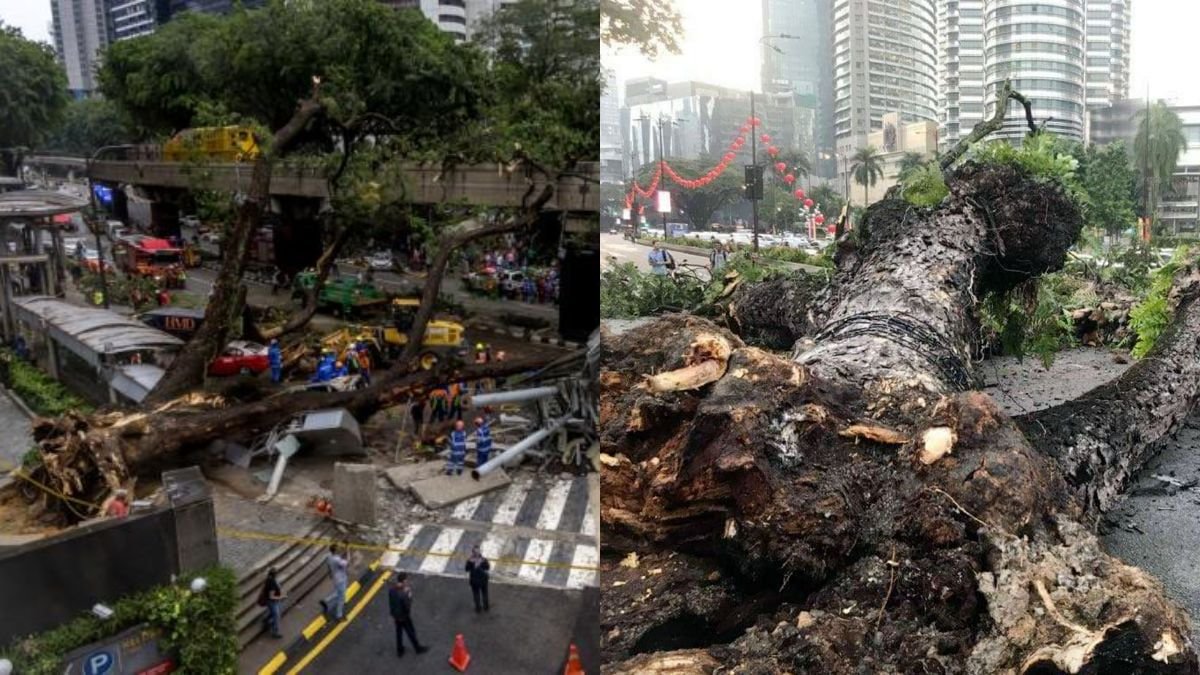The majority of events in the town are caused by failing trees. Two people were hurt in the event, which claimed the life of a 47-year-old man.
Prof Hazandy Abdul Hamid an arborist who was part of a panel of experts arranged by Universiti Putra Malaysia (UPM), said that the situation has been made worse by the drastic impact of climate change which affects the stability and health of mature, old, and large trees.
The dean of the Department of Forestry Science and Biodiversity under the UPM’s Faculty of Forestry and Environment explained that the increased risk of tree failure is due to environmental pressures like infrastructure development and building construction, which have heightened the risk of failure for these trees.
Hazandy’s Statement
Hazandy, who specialises in tree physiology and improvement, said the symptoms from extreme climate stress may only show after several years, and the damage might only become evident when a weakened tree or its branches fall during periods of strong winds and heavy rains.
According to Hazandy, trees might exhibit reduced growth for a period of one or two years. This decline, along with their weakened natural defences, creates an opportunity for pests and diseases to flourish.
“We’ve seen one of the most significant losses in mature trees, which are more vulnerable to stress and damage than younger, smaller trees. This has led to an increase in the number of mature trees falling or failing throughout the town.”
His colleague in the same faculty, Ruzana Adibah Mohd Sanusi, a senior lecturer in the same faculty, conceded that multiple factors could have contributed to these incidents. so, The surroundings of the tree also contributed to the tree failures.
Earlier this month, there was a tragic incident in downtown Kuala Lumpur outside the Concorde Hotel on Jalan Sultan Ismail. A 47-year-old man died in an incident and two others were also injured and several vehicles were damaged while the monorail line was blocked.
Less than a week later, another tree fell just a short walk away in front of Menara Prestige on Jalan Pinang. One of the cars that got damaged from the incident was a Proton X70 police patrol car that was escorting Melaka Chief Minister Datuk Seri Ab Rauf Yusoh.
Another factor contributing to this issue is that most of the trees planted in urban areas here were foreign species and were not native to our country.
This type of woody tree species or other introduced tree species chosen for urban areas in Malaysia are those that fast-growing species. These fast-growing trees with less dense tissues and lower wood density, which means they tend to hold more water compared to slow-growing species with higher wood density.
“In the case of drastic climatic changes, from hot to wet weather, the weakened internal wood in fast-growing trees due to the climate impact in previous years as stated above may fail because of the sudden aboveground burden of the large trunks or limbs from the absorbed water,” he said.
Federal Territories Minister Dr Zaliha Mustafa has given instructions to Kuala Lumpur City Hall (DBKL) to take action. They’ve been instructed to cut down high-risk trees around the city and come up with new guidelines, especially for aged or high-risk trees following the incidents.
Prime Minister Anwar Ibrahim gave an order to Kuala Lumpur Mayor Datuk Seri Kamarulzaman Mat Salleh that they have to plant 100 trees for every tree that is felled in the city.
Ruzana’s Response and Recommendations
In response, Ruzana said it’s important to conduct regular inspections and risk management should be done more frequently. This way we can prevent any more unintended incidents involving the masses.
Fellow UPM arborist Sreetheran Maruthaveeran also cautioned that cutting down should only be the last option, advocating instead for reducing the weight of the tree’s crown and branches. By doing this, we can help prevent trees from falling over during rainy weather.
“When you cut the branches at the wrong angle, you can bring even more infection and so on, and then it will be worse,” he said.
“This involves research experts from institutions of higher learning and specific research institutions to provide scientific and analytical data from various angles including climate and weather changes that can support the management of these trees to reduce the risk of tree failure and maintenance costs,” he said.




